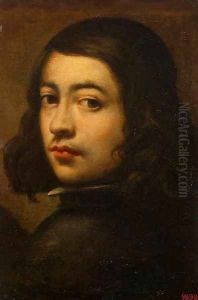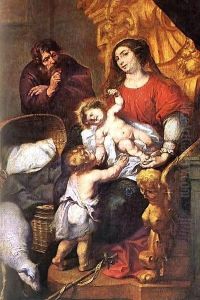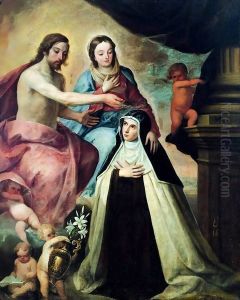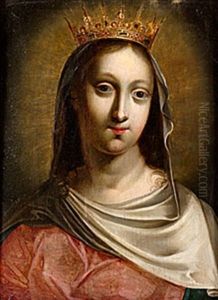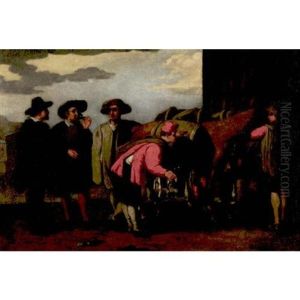Pedro de Moya Paintings
Pedro de Moya was a Spanish painter born in Granada in 1610. He is known for his work in the Baroque style, which was prevalent in European art from the early 17th century until the 18th century. Moya showed an early talent for painting and was initially trained by his father, who was also a painter. His early work was influenced by the prevalent styles of the time, including the tenebrism of Caravaggio and the naturalism characteristic of the Spanish school of painting.
In the 1630s, Moya moved to Seville, where he became a student and collaborator of the renowned Spanish painter Francisco de Zurbarán, one of the leading figures of the Spanish Baroque. Zurbarán's influence is evident in Moya's work, particularly in his use of chiaroscuro and his focus on religious subjects, which were typical of the Counter-Reformation period.
Moya later spent several years in London, where he was influenced by the works of Anthony van Dyck and other Flemish painters. This experience expanded his painting style, as he incorporated the more elegant and less austere elements of the Flemish tradition into his work. Upon his return to Spain in the late 1640s, Moya continued to work and develop his style in Granada and later in Córdoba and Madrid.
Though not as widely known as some of his contemporaries, Moya's work is significant for its synthesis of Spanish tenebrism with Flemish influences. He worked on a variety of subjects, including religious themes, portraits, and mythological scenes. His paintings are characterized by their dramatic lighting, detailed naturalism, and emotional intensity.
Pedro de Moya played a role in the transmission of artistic ideas between Spain and England and contributed to the evolution of the Spanish Baroque. He passed away in Granada in 1666. Today, his work can be seen in various museums and collections, offering insight into the cross-cultural influences of European art during the Baroque period.
